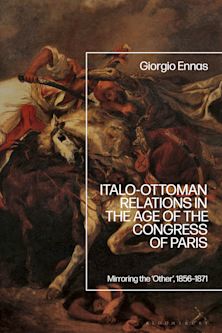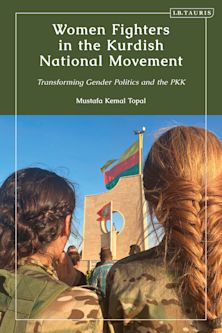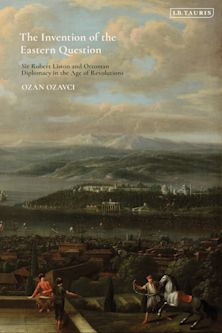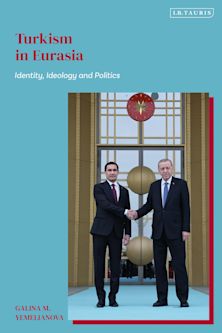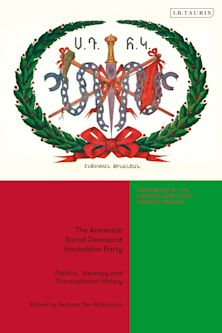- Home
- ACADEMIC
- Middle East
- Turkey and the Ottoman Empire
- Forms of Belonging
Forms of Belonging
Armenian Architects, Vernacular Style and Architectural Placemaking in the Ottoman East
Forms of Belonging
Armenian Architects, Vernacular Style and Architectural Placemaking in the Ottoman East
For information on how we process your data, read our Privacy Policy
Thank you. We will email you when this book is available to order
You must sign in to add this item to your wishlist. Please sign in or create an account
Description
Contrary to the historical record, which views the architecture of the eastern Ottoman cities as unchanging remnants of a medieval and proto-Turkish golden age, this richly illustrated book highlights the wide-ranging transformations that Mardin, Diyarbakir, Urfa, Antep, Bitlis and Erzurum, saw at the hands of Armenian architects of the nineteenth and twentieth centuries.
Case studies reflect the agency of Armenian architects in constructing these buildings- whether churches, mansions, government offices, schools, or commercial structures. Each chapter looks to one of these cities and the participation of Armenians in shaping these places, not just through architecture but through city institutions, patronage, and benevolence. It argues that Armenians used the urban environment, and a uniquely Armenian reinvention of vernacular architecture, which reflected their religious, educational, intellectual, and political networks, to partake in the revival of these cities in an era marked by reforms to the Ottoman polity, political culture, and local governance. This was a show of popular belonging, and pride in local traditions, but it was also, merged with symbols of Ottoman authority, a reflection of the formation of Ottoman local elites, which included these Armenians - thus representing complex localization and Ottomanization processes at work. This book shows that there was not 'one' Armenian culture or identity, but many competing visions across Ottoman cities.
Table of Contents
Acknowledgements.
Introduction.
Chapter 1: Conversion as belonging- the case of Mardin mimarbasi (chief architect) Serkis Lole.
Chapter 2: Mobility as belonging in Antep: the case of the Nazaretian House and the Sourp Asdvadzadzin Cathedral.
Chapter 3. Urfa as a Holy Land: Merchants, Missionaries, and Visual Demonstrations of Belonging.
Chapter 4: Diyarbakir Sourp Giragos Cathedral and Belonging as Antiquity.
Chapter 5: The Bitlis Municipality and Government House: Rebuilding as Belonging.
Chapter 6: Erzurum: Belonging as Church, State or Revolutionaries?
Conclusion.
Bibliography.
Product details
| Published | 11 Dec 2025 |
|---|---|
| Format | Ebook (Epub & Mobi) |
| Edition | 1st |
| Extent | 256 |
| ISBN | 9780755655090 |
| Imprint | I.B. Tauris |
| Illustrations | 60 bw illus |
| Series | Armenians in the Modern and Early Modern World |
| Publisher | Bloomsbury Publishing |
About the contributors
Reviews
-
An admirable and innovative study that opens new perspective on the history of Ottoman architecture and its culture. By focusing on the contribution of Armenians to the religious as well as secular architecture of East Anatolia, a region with multiple ethnicities and faiths and remote from the centre of power, the book reveals multi-layered aspects of artistic and cultural interaction. It is a pioneer work and as, the author herself says, this book is just the beginning of a field that is ripe for further investigations.
Doris Behrens-Abouseif, Professor, SOAS, UK
-
This book makes a bold and timely case for recognizing Armenian architecture as central to the remaking of the Ottoman East. Rather than merely documenting lost heritage, it argues that distinctive Armenian architectural forms emerged from the lived experiences of Armenians in cities like Mardin, Antep, Urfa, Diyarbakir, Bitlis, and Erzurum. Drawing on architectural analysis, archival sources, and memory books, it reveals how Armenians navigated belonging and visibility within a changing imperial landscape. This is a landmark contribution to the urban history of the Islamic world and a deeply significant intervention in understanding Armenian presence, creativity, and resilience amid marginalization and erasure in the Ottoman empire.
Mohammad Gharipour, Professor, University of Maryland, USA













